Art and architecture at the Bruges Triennial
Until 1 September, Bruges is hosting the 4th edition of its Triennale, entitled ‘Spaces of Possibility’. Every three years since 2015, the streets of Bruges have played host to international artists and architects. For this 2024 Triennial, organised under the supervision of curators Shendy Gardin and Sevie Tsampalla, 12 installations have been bringing the city to life since April. Accessible to the public and free of charge, the works are scattered around the heart of the city and its wooded surroundings, linking nature and urbanity, but also highlighting certain places that are more remote or have been recently transformed. Among these places, the choice fell on Place ‘t Zand, redeveloped in 2018, the new Bruges Meeting and Convention Centre, which opened in 2021, and the port of Zeebrugge, one of the largest in Europe. AA invites you to take a closer look at these installations.
Rachel Sablé
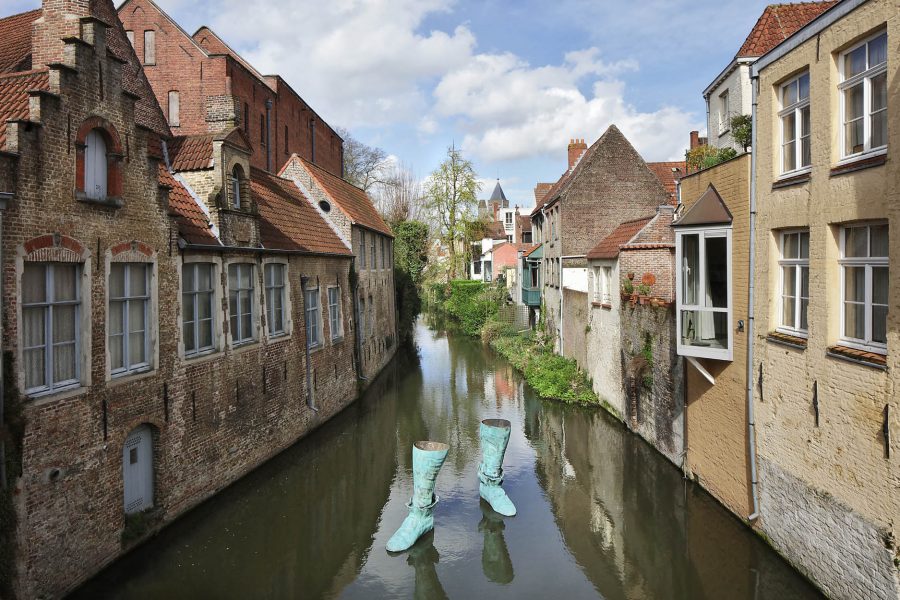
Ivan Argote – Who?
By placing a pair of boots on the river, the artist questions the place of sculpture in the city, but also that of the figures it represents, at a time when unbolting is increasingly common.
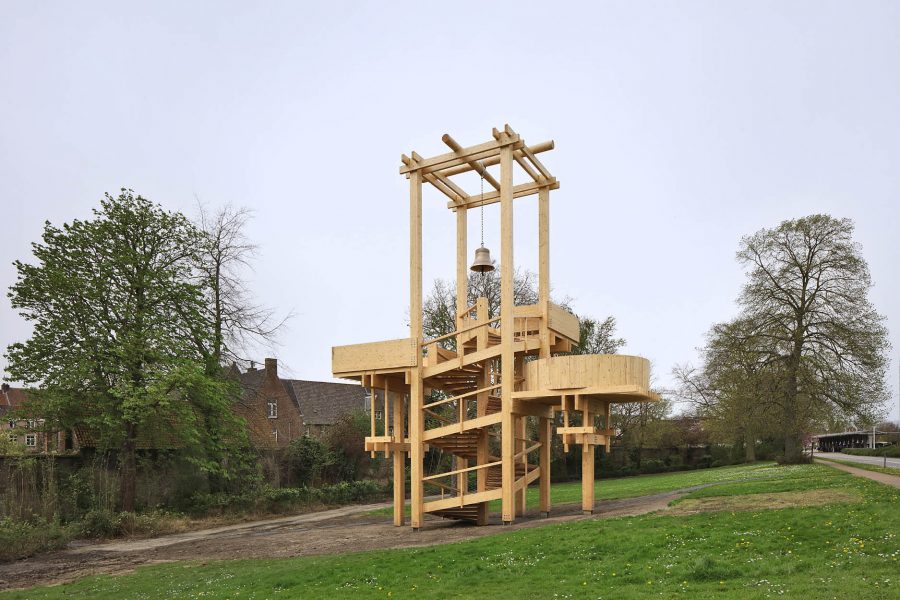
Bangkok Project Studio – The tower of balance
With this wooden structure, Bangkok Project Studio offers different views of the city of Bruges, in a sensory experience in which the walker is directly involved by ringing the bell.
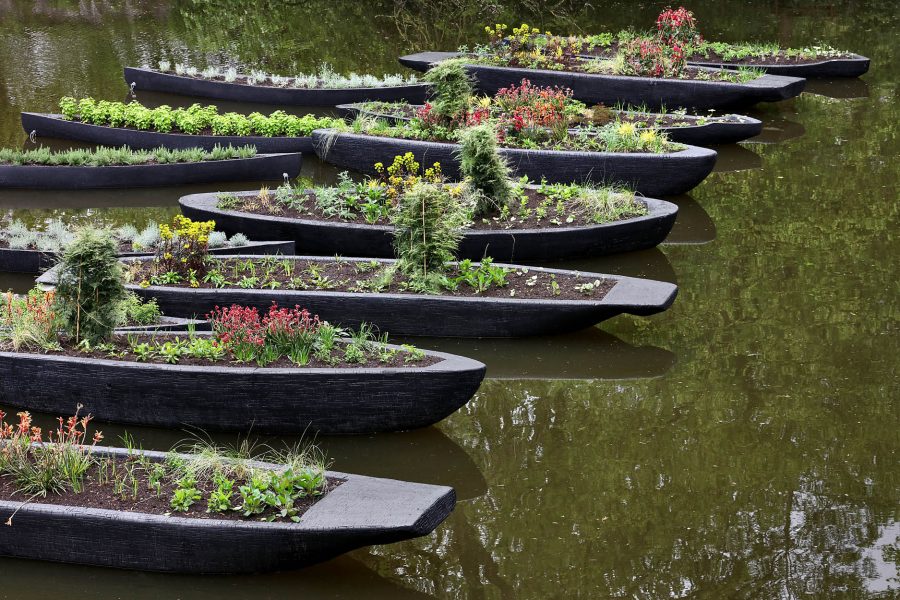
Sumayya Vally – Grains of Paradise
Grains of Paradise pays homage to the city’s commercial past with the African continent, in a tribute to floating markets. Black pirogues are placed on the Lac d’amour, filled with plants and spices such as maniguette, the Guinea pepper appreciated by the inhabitants of Bruges in the Middle Ages and nicknamed Grains of Paradise.
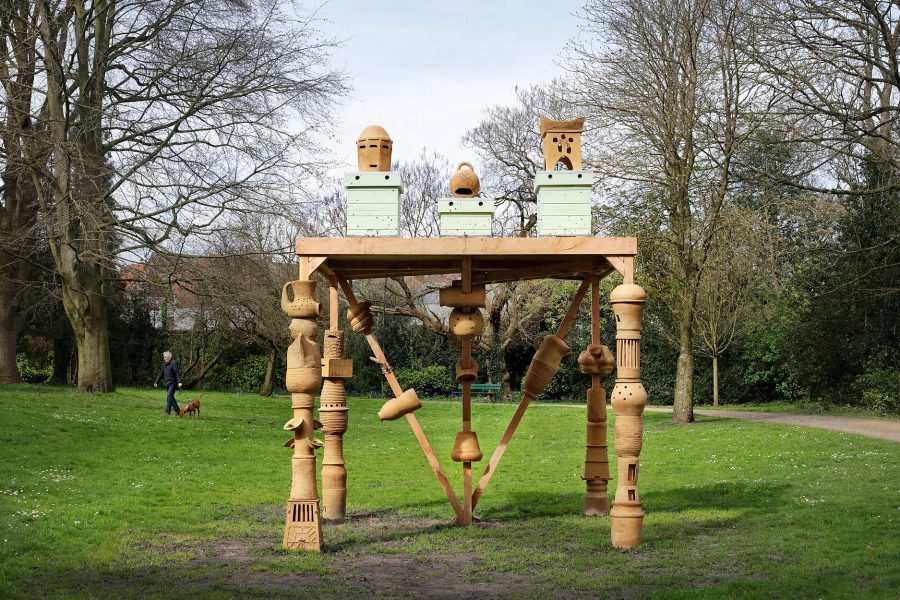
Mariana Castillo Deball – Firesong for the bees, a tree of clay
This ceramic structure, over two metres high, welcomes the bees to the heart of the Sebrechts park, in a total correspondence between the work and its setting.
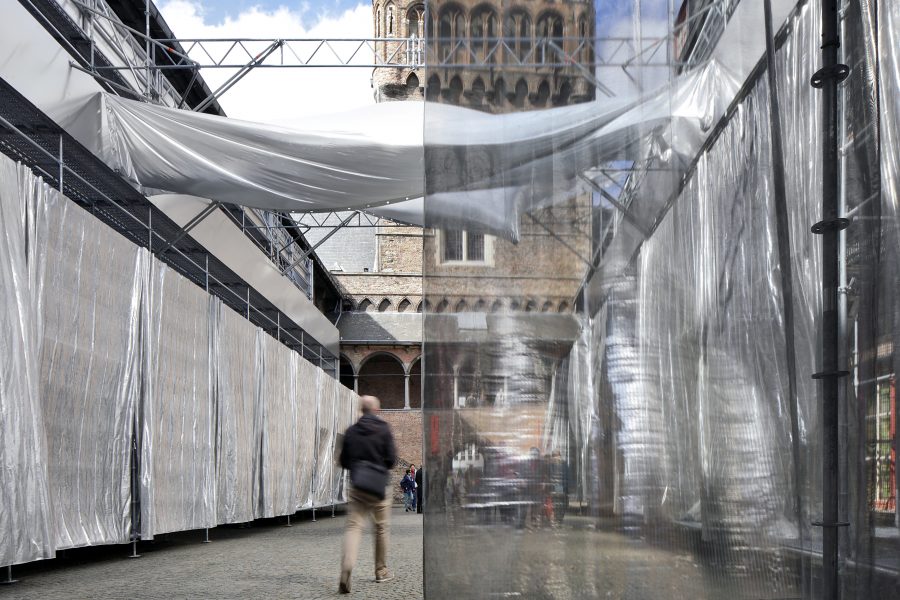
Traumnovelle – The Joyful Apocalypse
The cour des Halles is overlooked by scaffolding that acts as a vantage point for observing both the site and passers-by. With the addition of reflective aluminium panels, stones and silhouettes merge in this installation. A tribute to this vibrant part of medieval Bruges.
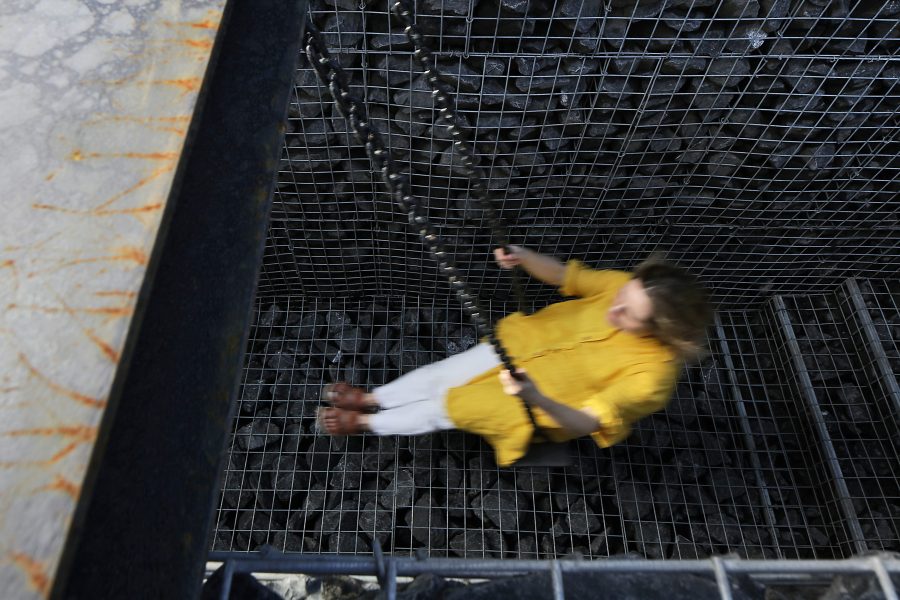
Mona Hatoum – Full Swing
In the gardens of the PZ Onzelievevrouw psychiatric hospital, Mona Hatoum installed this swing, wedged between the stones below. Here, the symbol of childhood becomes that of a swing towards freedom, between light and shadow, with the sky always visible.
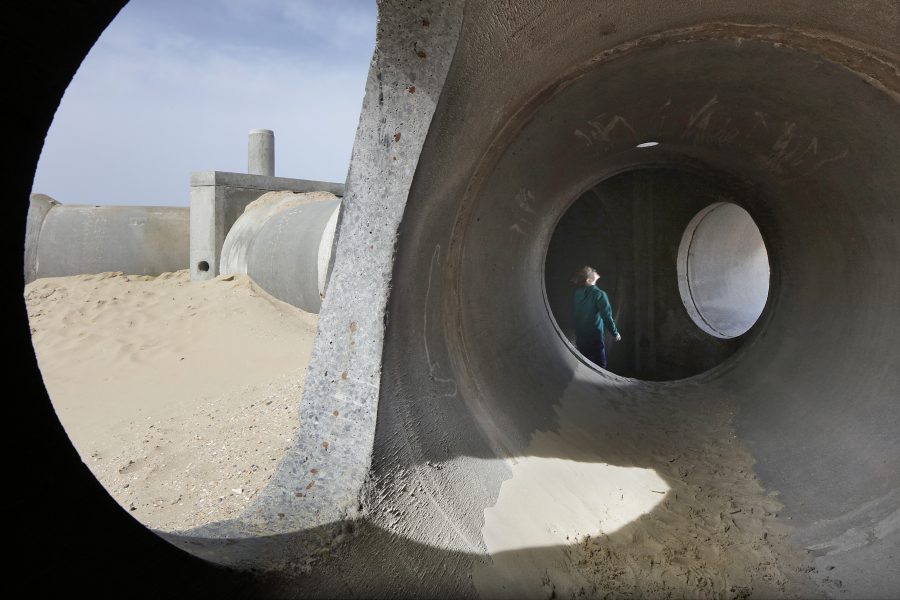
Ivan Morison – Star of the Sea
Ivan Morison chose to install this concrete shell directly on the beach, subjecting it to the wind, water and sand. Everyone is invited to take a stroll along it to discover, through the different openings, the surrounding landscapes, in particular the port of Zeebrugge.
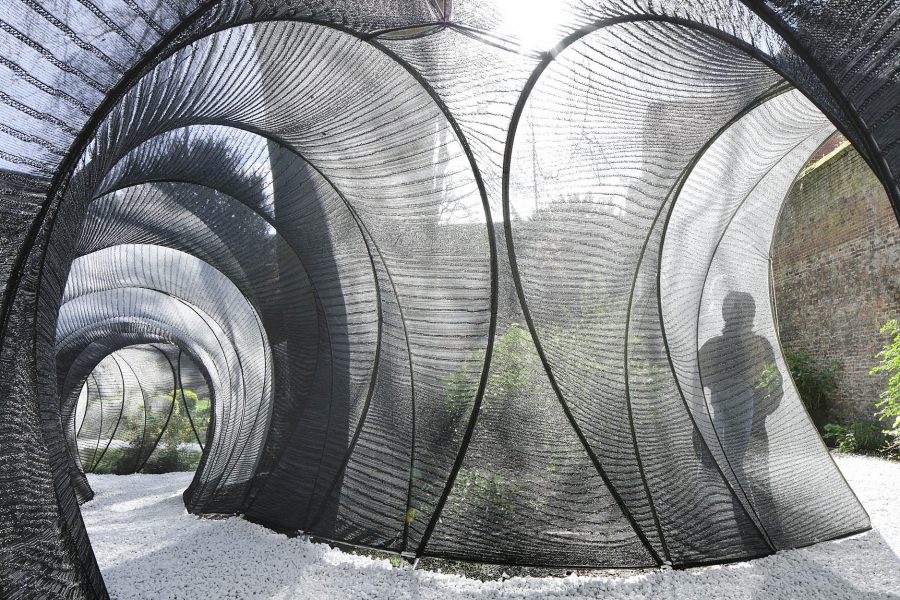
SO-IL – Common Thread
A tribute to Bruges’ textile heritage, particularly its 16th-century lace, this tunnel made from recycled bottle threads was created in collaboration with Delft University. Placed in the garden of the Couvent des Capucins, it links two parts of the same district, just as each inhabitant links with the others.
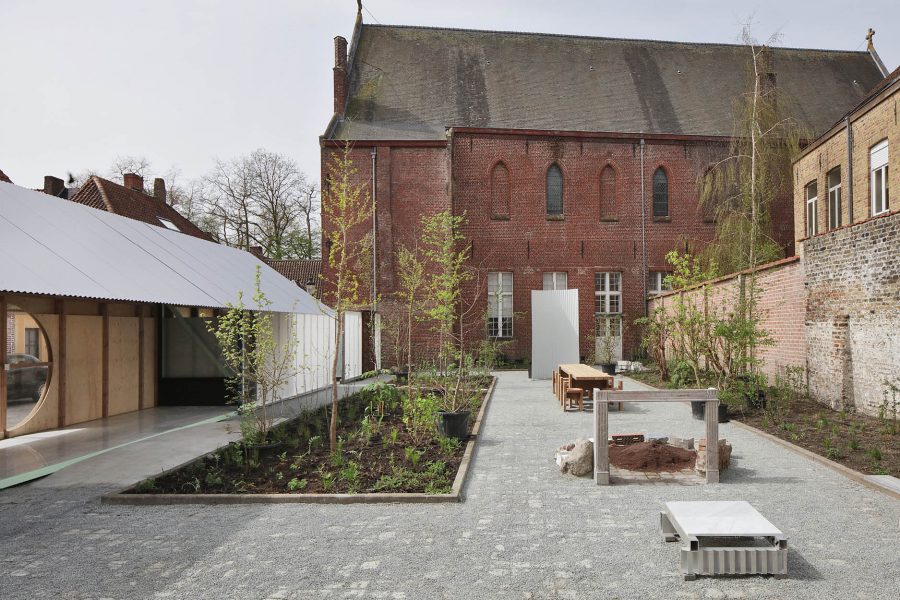
Norell/Rodhe – Raamland
Made entirely from second-hand objects, this installation celebrates a neighbourhood square that was previously closed off, and whose wall has been recreated for the occasion. The idea is to create a place where people can relax and meet, around a pavilion and some greenery.
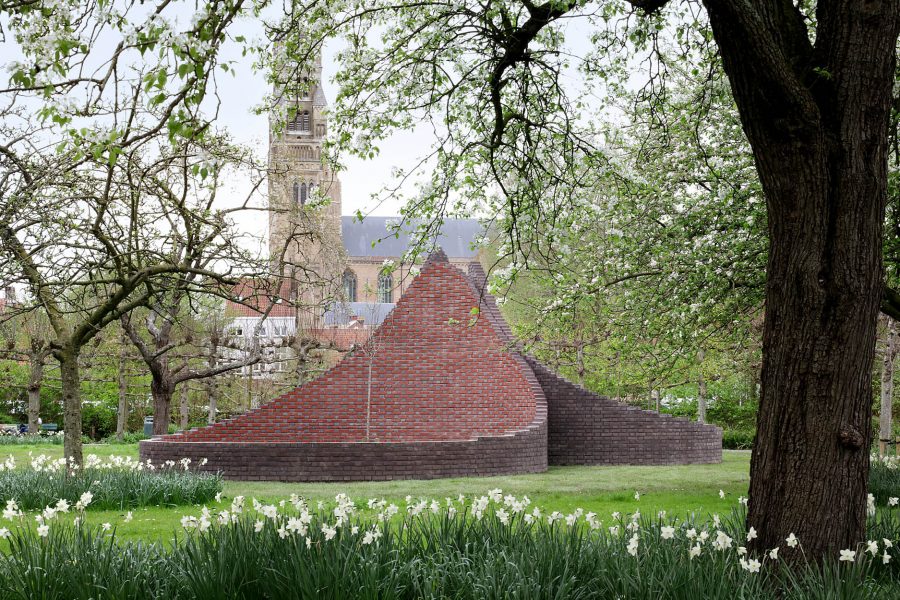
Shingo Masuda + Katsuhisa Otsubo Architects – empty drop
In a city as built-up as Bruges, the artists sought to highlight the importance of emptiness with this structure made of baked clay bricks. Set among the trees in the grounds of the Hôpital Saint-Jean, the work is also inspired by Japanese nature.
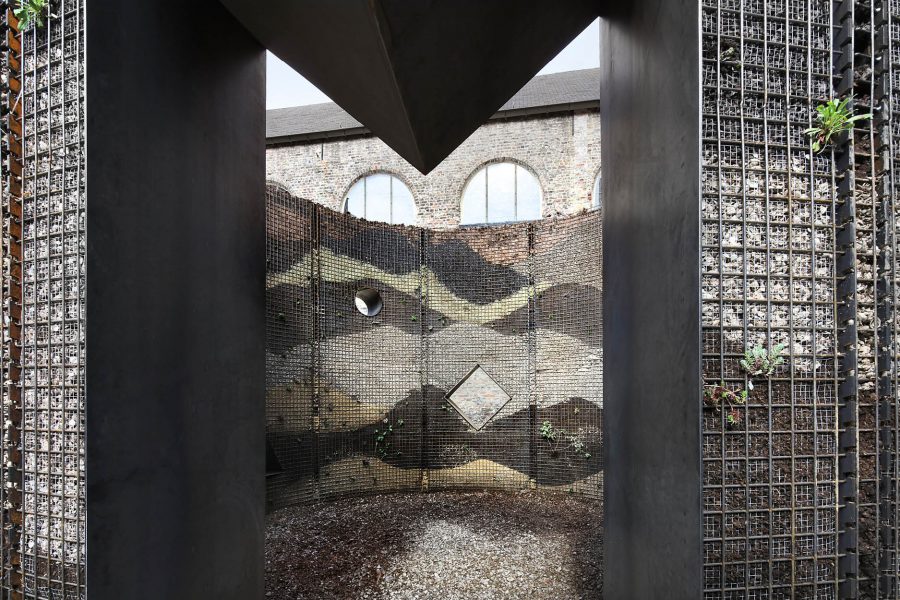
Studio Ossidiana – Earthsea Pavilion
Several layers of soil from the city have been placed in this one-metre-wide silo in Cour Bladelin. The various elements of a unique ecosystem can be directly observed, interacting with the weather conditions and the living creatures around them, from birds to insects.
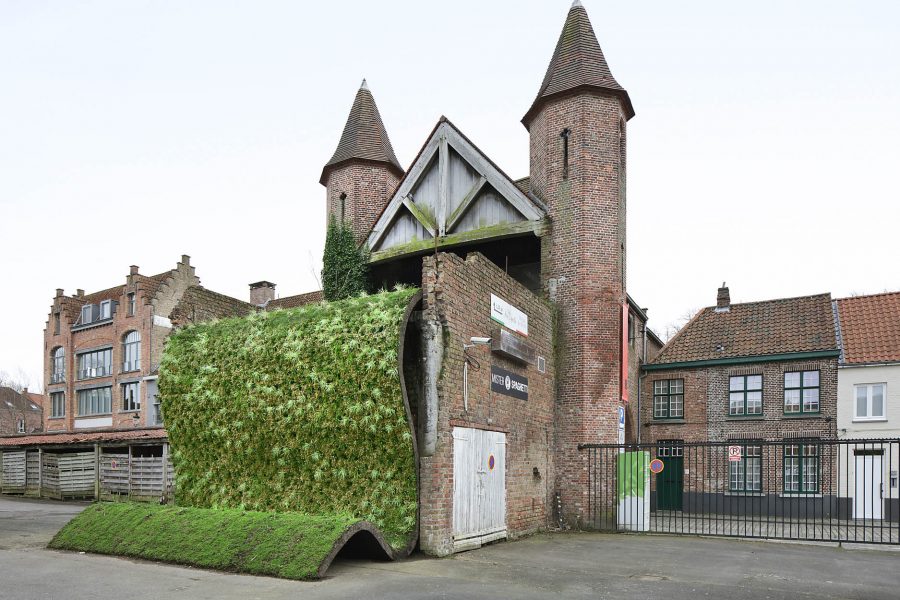
Adrien Tirtiaux – Under the Carpet
Left abandoned in the 70s, the road created between the Saint-Jean hospital and the Minnewater clinic to facilitate patient transport has re-emerged with Adrien Tritiaux’s installation. Several moss mats question this vanished heritage.
Learn more about the Triennale on www.visitbruges.be
Also discover the exhibition “Rebel Garden” created by Musea Brugge on www.museabrugge.be

